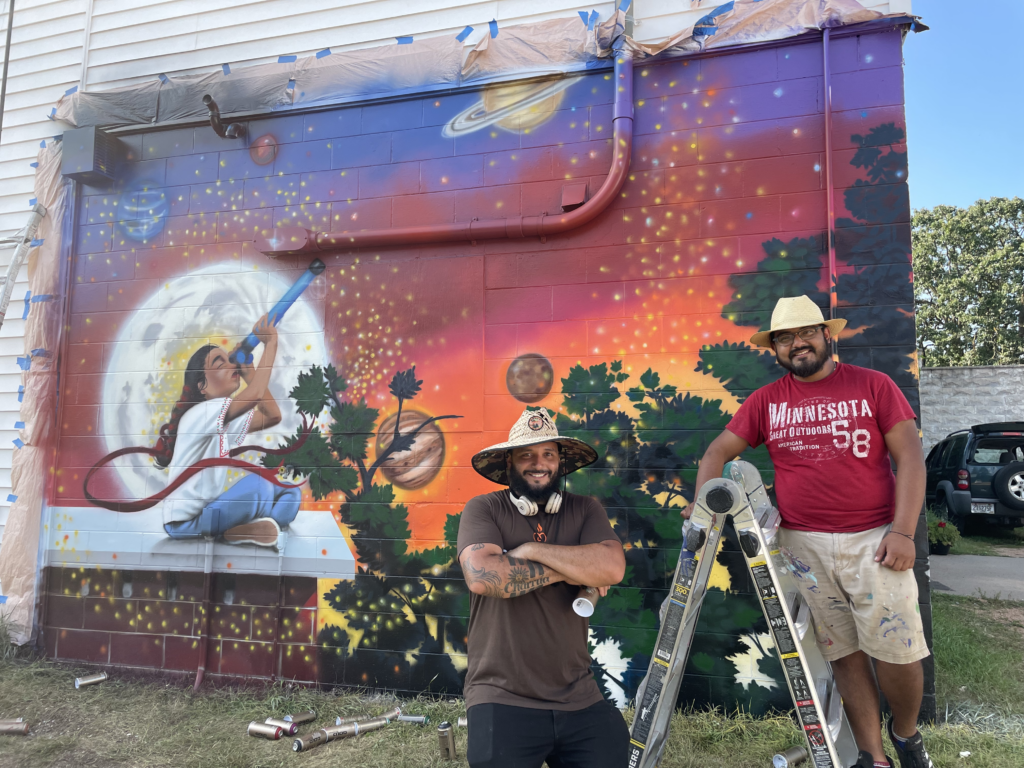You’ve planned out an awesome project. You’re excited to get started and create something new, but you need to write a grant proposal first. There’s no need to panic! Here are seven tips to write a strong grant proposal.
1. Before you write, prepare
Writing grants is often intimidating because there are strict guidelines for funding, and the grant makers often ask for a list of attachments (like program budgets, Board of Directors’ lists, Audited Financials, etc.). Set yourself up for success by reading through all the guidelines and instructions for the grant before you dive into writing.
Will you need to submit your proposal via email or an online portal? Is there a strict deadline for submissions? Do you need to include a signed letter from your board chair? The grant guidelines should answer these types of questions.
Make sure you’re prepared by making a list of requirements and attachments. Create a separate text document of the application’s questions. This allows you to save your work incrementally and collaborate with others.
2. Workshop your unique case for success
Your case statement (or case for support) states the most important information about your organization or project. It illustrates your track record and the effectiveness of your work. The goal of a grant proposal is to convince the funder that you and/or your organization are worthy of investment. A robust case statement is one that demonstrates why you are the best choice for financial backing.
To develop your case statement, ask yourself the following questions:
- What makes your program or mission distinct?
- How does your organization help people?
- Why is your program best suited to serve your community or solve an existing problem?
- Why are you the best person or organization to take on this work?
Developing a strong case for support may take time, but it is something you can use across fundraising efforts, including future grant proposals, with a few edits.
Resource: Find your Competitive Advantage
-
Competitive Advantage: Knowing Your Value & Setting Yourself Apart
The things that make your nonprofit special are assets you can leverage to build community and monetary support. This article helps you identify the qualities that make your organization different and make them work to your advantage.

3. Create an archive of templated answers
The questions vary from application to application, but there are some common questions grant makers ask. Common questions include your organization’s mission and history, questions around the sustainability of a project, or goals and objectives. There is no need to reinvent the wheel with every grant proposal you write, as answers to these questions will not change significantly.
You can copy answers to these questions from your last application, paste them into a new application, and tweak the language as needed. This will save you time and energy. Be sure to review your proposal thoroughly before submitting, however, to catch any copy/paste errors (such as referring to the wrong funder in an application).
Having templated language for grant proposals can also be helpful if you have multiple people working on grants. Templated language keeps the writing consistent and sets an organizational standard across applications.
4. Include quantitative and qualitative information
A strong grant proposal is a balance of quantitative information(such as program statistics) and qualitative information(such as participant stories). Consult your colleagues responsible for measurement and evaluation of your organization’s programs when looking for quantitative data.
Providing numbers in your grant proposal will illustrate the importance of your program in your community and serve as evidence that you are making an impact. Important data points will vary by organization. For example, a program with specific outreach and education goals would want to report the quantity of program participants and the quantity of instruction hours.
You can also use stories and quotes to humanize your work. Try to share success stories and quotes and anecdotes that demonstrate the good outcomes that come from your work. Putting a face to your program can be very compelling; consider the following statements:
“Your support can bring visual arts programming to hundreds of Minnesota students.” or
“Your support can bring visual arts programs to Minnesota students, like Eloise. She says, ‘I love coming to art class! It’s so much fun to be creative and see my teacher each week.’”
Be sure to get the appropriate approvals to use names, quotes, anecdotes, and/or photos from your program participants. Sharing stories and quotes can provide greater context to your work, but if done incorrectly, it can lead to exploitation.
Resource: Get Ready for Federal Grants
-
Best Practices for Federal Grant Applications
Federal funding for the arts is available but not always the most accessible, especially if you’ve never applied for opportunities in the past. This article provides a basic eligibility roadmap for non-profit organizations that are new to seeking federal funding.

5. Make sure you use attachments to their full potential
Some funders might give you the option to upload an additional supporting document or two. You may feel tempted to skip these optional attachments because it seems like extra work, but that would be a mistake!
This is your chance to share more about the amazing work you and/or your organization are doing. Attach a flier about your program, your most recent annual report, or a cover letter from your Executive Director or Board Chair.
By providing more information like the examples above, you will give the funder a greater understanding of the comprehensive work you do and the impact your work has on the community.
Some funders limit your answers to their questions to a set amount of characters or words and these supplemental attachments can give you the space to elaborate or share stories that you otherwise wouldn’t have space to include.
6. Seek out training opportunities
I never set out to be a grant writer. When I started my career, I liked to write and was asked to write a grant proposal for my organization. After writing a few grant proposals, I sought out formal training from The Minnesota Council of Nonprofits. Over the years, I’ve noticed this is how many grant writers get their start. It doesn’t matter if your job title is “grant writer” or if writing grants is just one of the many things you do, everyone can benefit from writing training.
The Minnesota Council of Nonprofits holds regular training opportunities for grant writers. These trainings are offered either in person or online, and are open to all.
Several universities also offer online grant writing training or certification courses, including the University of Minnesota and Northwestern University.
The Grant Professionals Association is also a reputable resource for online training and networking.
Formal training is not required to start grant writing, but courses can help hone your writing skills. Often, you are asked to bring a proposal you are working on to a course and you can receive feedback. Feedback from the instructor and/or your peers provides a perspective other than your own.
Writing is largely an individual activity and when someone else reads your writing and provides feedback, it can help you pinpoint weaknesses in your proposal and correct spelling or usage errors.
7. Learn from others
In addition to training, you can also learn from those around you. Reach out to contacts at other organizations and ask if they would share a successful grant proposal with you for learning purposes. Additionally, some funders will share a successful grant proposal they have funded as an example if you ask.
Volunteering to serve on grant panels is also a great way to read a variety of grant proposals and be a part of the review process. It is often easier to identify the strengths and weaknesses of someone else’s writing than your own, and seeing real-life examples of what works and doesn’t work will make you a better writer in the process.
Reading other grant proposals is a way to discover narrative strategies, explore word choices, and learn more about syntax and structure. By reading a variety of grant proposals, you expose yourself to writing, perspectives, and programs other than your own. You can see what works in a proposal and what doesn’t and implement what works into your own writing.
View Successful Applications
Arts Midwest makes funded grant proposals available for download when possible. Click the button below to download a ZIP file that includes the guidelines for the 25-26 NEA Big Read, two successful sample applications, and a preview of the application in SmartSimple.
Download Application Resources (ZIP File)Become a Panelist
Arts Midwest welcomes individuals from across the United States who are interested in joining our panels for Shakespeare in American Communities, GIG Fund, or the NEA Big Read.

Conclusion
I’ve been a grant writer for over a decade, and when people ask me how to get started writing grants, I say the best way is to just do it. Your first application may not result in funding, but going through the whole process of writing and assembling a full application is the best way to learn. Practice may not make you perfect, but it will make you proficient and more confident in your grant writing abilities. So, if you get declined with your first few grants, keep trying! You will learn something from each grant proposal you write.
